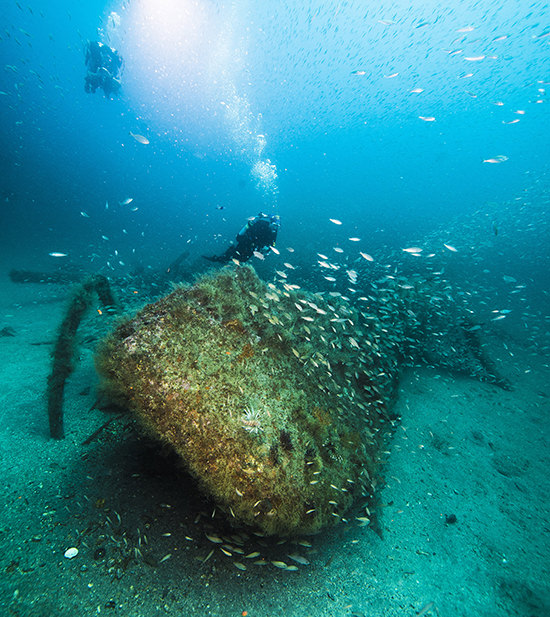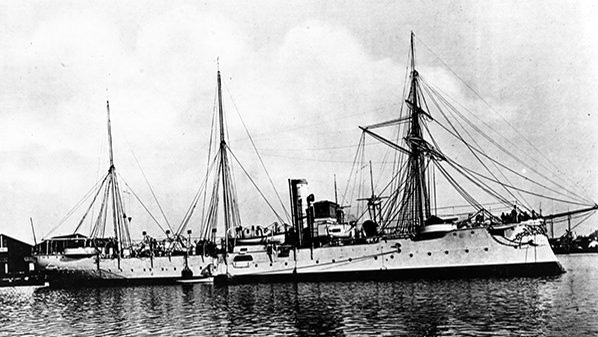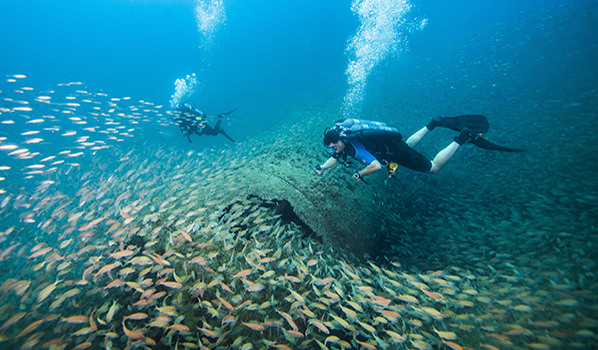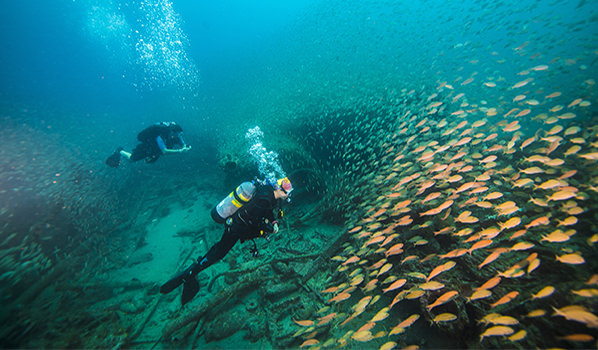ex-USS Schurz
Ship Stats
Depth: 110 feet
Vessel Type: U.S. Navy Gunboat, formerly Bussard class unprotected German Cruiser
Length: 255 feet Breadth: 32 feet
Gross Tonnage: 1,630 Cargo: N/A - warship
Built: 1894, Kaiserliche Werft (Imperial Shipyard), Wilhelmshaven, Germany
Owner: U.S. Navy
Lloyd's Register Details: Composite hull, steel, wood sheathed and coppered, cruiser stern, triple expansion, three cylinder engines, two screws
Former Names: SMS Geier (Imperial German Navy, 1894-1917)
Date Lost: June 21, 1918
Sunk By: Collision with SS Florida
Survivors: 216 of 217 survived (1 dead)
Data Collected on Site: Still and video photography; multibeam sonar
Significance: The ex-USS Schurz, formerly the German cruiser SMS Geier, is the only German Imperial Navy warship captured by the U.S. Navy during World War I. Schurz utilized both sail power and triple expansion steam engines for locomotion and experimented with wood and steel in its hull. The Schurz wreck site is unique in the archaeological record, because its composite construction exemplifies the transition point between the age of sail and steam, as well as wooden and metal hull design.
Wreck Site
At a depth of 110 feet, a majority of the Schurz wreck is contiguous and can easily be circled during a single dive. The hull sits upright with a slight tilt to port, but with many features still evident, such as its riveted hull and engine machinery. The four boilers are offset amidships and stand close to the highest relief of the site. The cruiser's stern and steering quadrant are still intact. Visibility can often be over 100 feet, and the wreck has abundant marine life.
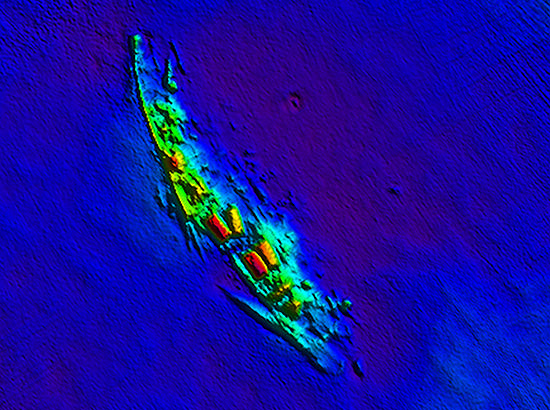
Historical Background
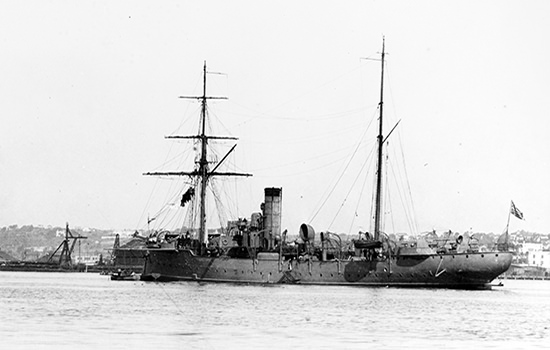
Originally known as the SMS Geier, the 255-foot long German cruiser of the Bussard class was built in 1894, by the Kaiserliche Werft (Imperial Shipyard) in Wilhelmshaven, Germany. The Geier's composite hull construction combined wood, steel, and copper sheathing, and its use of both sail and steam for locomotion made it a prime example of the evolution from the traditional wooden sailing fleets to the modern steel navies.
Although the Geier was launched in 1894, it did not begin its overseas career until 1898, when it traveled to Haiti to suppress a native upraising. The Geier participated in the Spanish-American War (1894), the Boxer Rebellion (1900-1905), and the Turkish-Italian War (1911-1913).
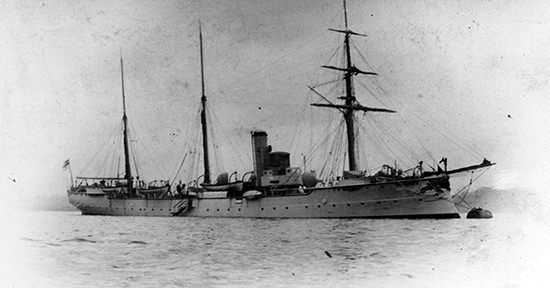
In 1914, World War I broke out as the Geier steamed towards Tsingtao. Alone in the eastern Pacific, under gunned and chased by hostile Japanese naval forces, the Geier's captain, Karl Grasshof, decided his best course of action would be to intern his vessel in a neutral port. The Territory of Hawai'i appeared the most benign, so Geier made all possible speed to Honolulu. After three weeks in the port of Honolulu, the U.S. Navy intervened and detained the Geier to prevent the ship and crew from advancing the German war effort. During its three-year internment in Honolulu, hostilities escalated between the United States and Germany, until 1917, when the United States entered World War I.
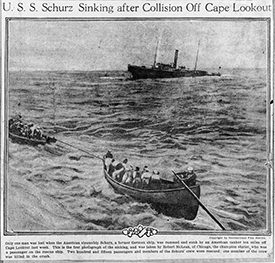
The United States seized the Geier through an Executive Order at the outbreak of the war and discovered the Germans had not been idle during their stay in Honolulu. When the captain's diary was confiscated, it was discovered that the officers and crew were not only attempting to smuggle themselves back to Germany, but were engaging in as much mischief as possible to further the German cause. Although the ship's radio had been sealed, the resourceful Germans broke the seal and used the radio to relay messages to other German vessels in the Pacific. In order to stir up friction between the United States and its neighbors, the Geier had been transmitting bogus radio reports that Japanese troops were landing in Mexico, currently in the midst of a revolution, and German troops were landing in Canada. At the start of the war, the American authorities simply were not suspicious enough of the Germans to closely check the Geier's sealed radio room, and the Germans were reportedly able to use Geier's radio while the ship's band played lively music to drown out the sound of the crackling wireless telegraph.
After Geier's seizure, it became property of the U.S. Navy, and underwent minor modifications to re-enter service as the ex-USS Schurz. Named after the famed writer, Union Army general, Senator, and Secretary of the Interior, Carl Schurz, the vessel spent most of its active life conducting escort duty and coastal patrols, first in the central Pacific and later in the Atlantic. While on its last patrol, the Schurz was involved in a collision, when it was rammed by the steamer SS Florida in the early morning of June 21, 1918, off Cape Lookout, North Carolina. Under full steam, but without running lights, the Florida crashed into the Schurz along the starboard bridge, penetrating twelve feet into the well and berth decks, causing one fatality and injuring twelve officers and crewmen. Schurz sank rapidly and at 7:58 am disappeared beneath the waves. The subsequent Naval Court of Investigation decided that the collision was due to the wrong navigation of the SS Florida and placed the responsibility on the Florida's captain. The name Schurz was struck from the Navy list on August 26, 1918.
